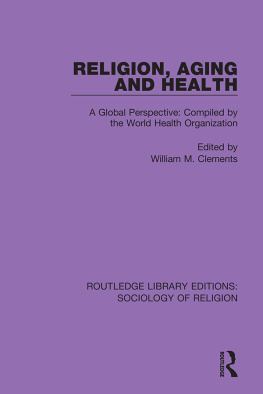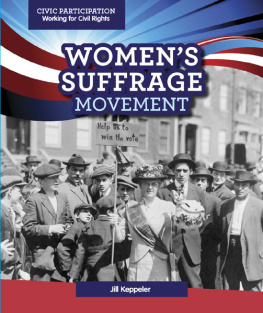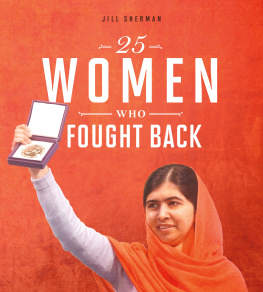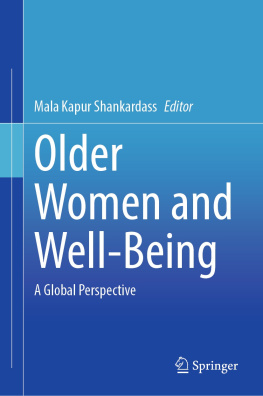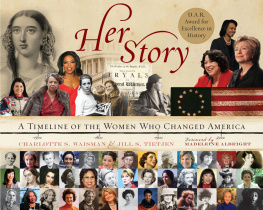The Health of Women
A Global Perspective
Published in association with the
National Council for International Health
First published 1993 by Westview Press
Published 2018 by Routledge
711 Third Avenue, New York, NY 10017, USA
2 Park Square, Milton Park, Abingdon, Oxon OX14 4RN
Routledge is an imprint of the Taylor & Francis Group, an informa business
Copyright 1993 Taylor & Francis
All rights reserved. No part of this book may be reprinted or reproduced or utilised in any form or by any electronic, mechanical, or other means, now known or hereafter invented, including photocopying and recording, or in any information storage or retrieval system, without permission in writing from the publishers.
Notice:
Product or corporate names may be trademarks or registered trademarks, and are used only for identification and explanation without intent to infringe.
Library of Congress Cataloging-in-Publication Data
The Health of women : a global perspective / edited by Marge
Koblinsky, Judith Timyan, and Jill Gay.
p. cm.
Includes bibliographical references and index.
ISBN 0-8133-8500-8 (HC) ISBN 0-8133-1608-1 (PB)
1. WomenHealth and hygiene. 2. WomenHealth and hygiene
Social aspects. I. Koblinsky, Marjorie A. II. Timyan, Judith.
III. Gay, Jill.
[DNLM: 1. Womens Health. WA 300 H433859]
RA564.85.H4324 1993
362.1082dc20
DNLM/DLC
for Library of Congress
92-49573
CIP
Cover photos: top, mother and child in Liberia (courtesy of the United Nations, UN photo 33096/Davis); right, women sewing in a factory in Brazil (courtesy of the World Bank); bottom, girl and women carrying fuel wood in Nepal (courtesy of the Agency for International Development)
ISBN 13: 978-0-8133-1608-6 (pbk)
This monograph is the result of the unique combination of enthusiasm, teamwork, and dedication which characterized the planning and presentation of the NCIH1991 International Health Conference on Womens Health.
More than sixty international health and development professionals actively participated in the planning process as part of the Conference Advisory Committee, under the able leadership of Peggy Curlin and Anne Tinker and supported by the NCIH staff led by Frank Lostumbo and Francesca Dixon. Ann Van Dusen, of the U.S. Agency for International Development Office of Health, provided vital assistance to NCIH in distributing the Call for Abstracts to international health professionals through the AID network of health officers overseas. Many committee members also served in the ranks of the more than thirty rapporteurs who followed the conference events, led the discussions, and incorporated the ideas into the development of the Action Agenda, a process brilliantly facilitated by Jill Sheffield.
Neither the conference nor the Action Agenda would have been possible if it were not for generous grants from the MacArthur Foundation, the Rockefeller Foundation, and the United States Agency for International Development. Of the more than 200 presenters and forty-five speakers who provided the base of material for this book, many from abroad were able to participate only because of a generous grant from the Ford Foundation made possible by Jose Barzelatto, who also provided critical assistance in developing the program.
The conceptualization and design of this book were the result of the extraordinary efforts of the chapter authors themselves and the three editors, Marge Koblinsky, Judith Timyan, and Jill Gay. And the entire endeavor was reinforced at every turn by the commitment and leadership of former NCIH president Russell Morgan.
The heart of an organization such as NCIH is the commitment of its members. This book is a tribute to the cooperative efforts that were so generously and voluntarily contributed by all involved.
Eliot T. Putnam, Jr.
President, NCIH
Janet Gottschalk
Linda Vogel
Governing Board Co-Chairs
The 1991 Conference Advisory Committee
John Alden, Mary Ann Anderson, Raj Arole, Michele Andina, Jose Barzelatto, Naomi Baumslag, Rogers Beasley, Gretchen Berggren, Irene Boostrom, Judith Bruce, Roxanna Carillo, Paulette Chapponniere, Elayne Clift, Susan Cochrane, Francine Coeytaux, Sally Coghlan, Peggy Curlin, Nick Danforth, Frances R. Davidson, Francisco Di Blasi, Joan Dunlop, Veronica Elliott, Gayle Gibbons, Geeta Rao Gupta, Muhiuddin Haider, Polly Harrison, Judith Helzner, Pat Hutar, Pamela Johnson, Marge Koblinsky, Adetokunbo Lucas, Subhi Mehdi, Alvaro Monroy, Melanie Marlett, Martita Marx, Chloe OGara, Willa Pressman, Pam Putney, Rebeca delos Rios, Allan Rosenfield, Judith Senderowitz, James R. Sheffield, Jill Sheffield, Margaret Snyder, Adwoa Steele, Patience Stephens, Jeanne Betsock Stillman, Norma Swenson, Judith Timyan, Anne Tinker, Peggy Valentine, Linda Valleroy, George Varkey, Anvar Velji, Linda Vogel, Soon Young Yoon, and Margot L. Zimmerman.
Peggy Curlin and Anne Tinker
This book is the product of the 1991 National Council for International Healths (NCIH) Conference on Womens Health: The Action Agenda. The conference was launched on a note of both rage and hoperage at the inequities and neglect of the past and signs of hope for the growing recognition of the need for improvements in womens health and the prospects for change. The Conference celebrates twenty years of the alliance of international health practitioners and policy makers concerned with global health issues. In these two decades great strides were made in providing preventive health. Today, 80 percent of the worlds children are immunized against infectious diseases. Progress has also been made in providing children with life saving treatment of diarrheal diseases. In this decade the child survival initiative has been an effective strategy to mobilize resources, advocacy and action to save children from needless death.
However, as we look back over the past twenty years of international health we are struck by the paucity of attention that the creators and sustainers of children have received. Every year millions of women suffer preventable illness and five hundred thousand of them die from pregnancy-related complications. Too many suffer and die because they lack the information and resources to care for themselves.
As our distinguished authors point out, factors such as the status of women and their work confound womens ability to access health care. This book addresses the information and services women need to improve their health and the context in which they live their lives.
The findings in this book reflect highlights from the papers presented and the formal and informal discussions during the conference. We feel they do considerable justice in representing the rich mixture of viewpoints of the 1,400 participants and speakers who represented seventy-four countries. This document attempts to gather together the major threads of experience in providing women of all ages with health care. Most importantly, it suggests concrete ways to redress international inattention to womens health. It also sets realistic targets for moving from concern to action.
The loom on which the threads of this experience will be woven into a new tapestry for womens health is made of guiding principles, clearly brought forth in the conference.



